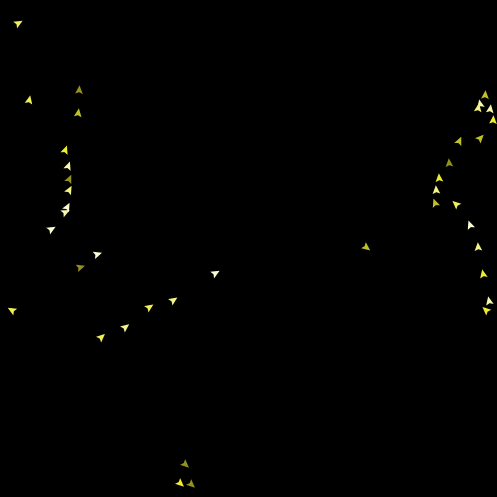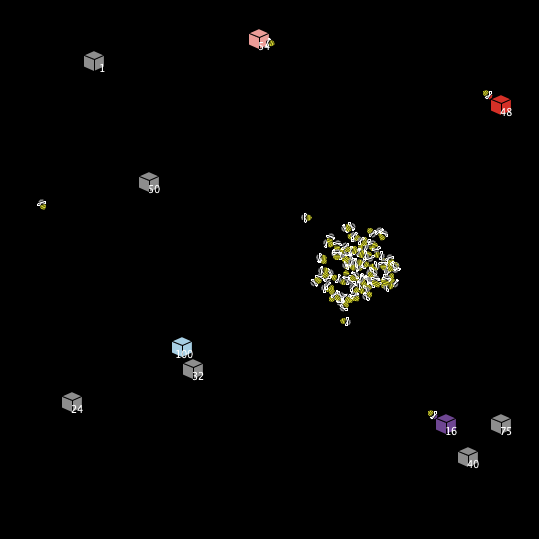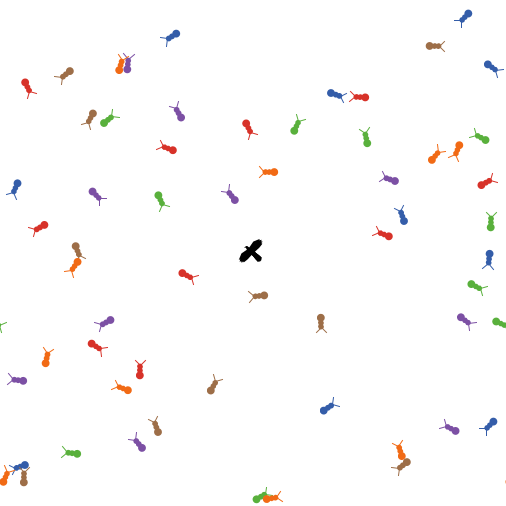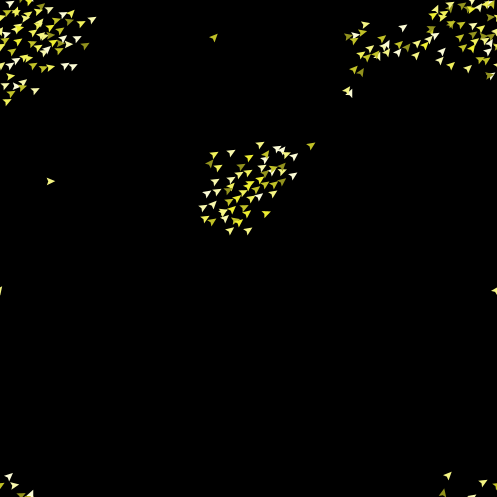in-cone
in-cone is a primitive that helps us simulate a "cone of vision" in front of a turtle. It allows us to model an agent having some sight or other sense in front of them, but not behind or to the side of them.
The cone is constructed with two inputs: how far the agent can see (radius), and how wide the agent can see (degrees between 0 to 360). For example, if we wanted some rabbits to eat if there were carrots in front of them, but not behind or to the side, we could write the following code:
ask rabbits [
if any? carrots in-cone 3 45 [ eat ]
]
Things to keep in mind when using in-cone:
- You can also use floating point values for the radius and angle parameters such as
in-cone 1.25 66.66. - Both turtles and patches can use
in-cone. - Keep in mind that
in-conemay report the original turtle, too, if you are using the same breeds. Be sure to account for that in your models by using theotherprimitive. For example, this code would throw an errorask turtles [ create-links-with turtles in-cone 2 30 ], while this one would work fineask turtles [ create-links-with other turtles in-cone 2 30 ]. - You can combine
in-coneand thewithprimitives to narrow down the target agents but make sure to encapsulate the firstwithstatement within parentheses( ). For example, you can write a code likeif any? (carrots with [color = orange]) in-cone 3 45 [ eat ].
In the model example below, we use in-cone to simulate four motion-activated wildlife cameras. When a camera detects that there are any? animals in-cone 8 50, it will turn yellow to simulate taking a picture. (Note that the highlighted patches are just to better visually show the cone of vision. In actuality none of the in-cone turtle detection has anything to do with which patch a turtle is standing on.)
Try it Yourself
What's next?
Once you mastered the in-cone primitive, don't stop there. Check out the resources below to improve your NetLogo skills.



